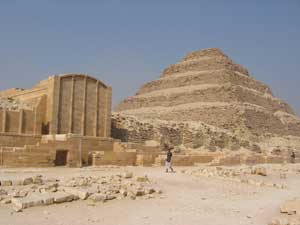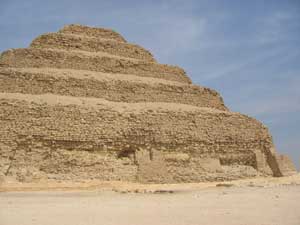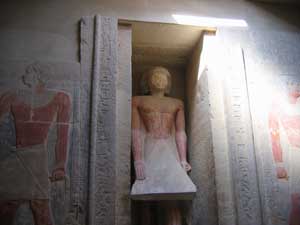SAQQARA
  
|
Site of the principal necropolis of the ancient city of Memphis, Saqqara is situated 17 km from Cairo on the west bank of the Nile. The cemetery was in use from the 1st Dynasty (3100 BC) to the Christian Period (AD 540). The site is 6 km long and 1.5 km wide.
In the Early Dynastic Period (3100-2670 BC) an extensive cemetery of mastaba tombs developed along the northern edge of the plateau. In the 3rd Dynasty, the architect Imhotep devised the step-pyramid for King Djoser. This was the first time that stone architecture had been used on a grand scale. His successor Sekhemkhet planned a larger structure but this was never completed. A number of kings of the 5th (Userkaf, Unas) and 6th Dynasty (Tety) constructed pyramid tombs at the site During the Old Kingdom, members of the Memphite elite were buried in stone mastaba tombs. These mastaba tombs are mainly located in the northern area of the site. During the New Kingdom (1550-1180 BC), members of the elite were buried either in stone tombs at the southern end of the site or in rock-cut tombs along the escarpment. In the Late Period (747-332 BC), large numbers of sacred animals were buried in underground galleries at the northern end of the site. These included the ibis and baboons of the god Thoth, and the sacred Apis bull of Ptah. Dogs or jackals were also buried in connection with Anubis, and cats with Bastet. |